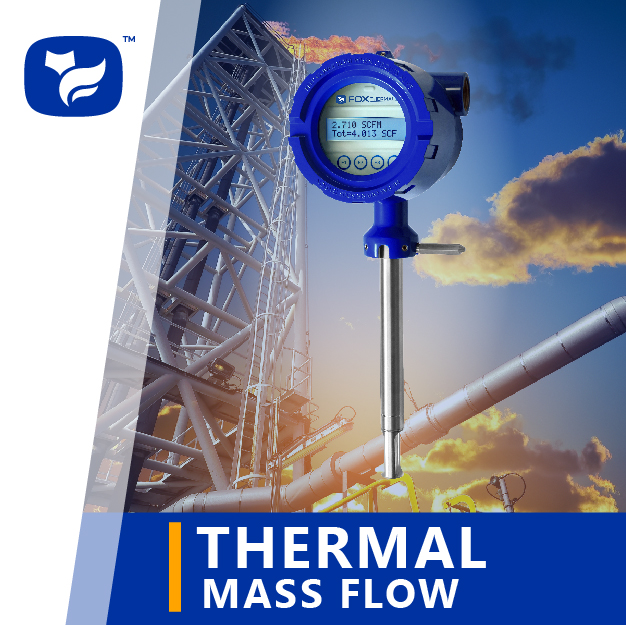



Thermal flow meters are designed to measure the mass flow of emissions, air, and gases such as natural gas, fuel gas (propane and lpg), compressed air, nitrogen, methane, butane, oxygen, argon, and carbon dioxide.
Is this technology right for your industry?
While there are many industries that use thermal flow meters in their operations, one of the largest relying on gas and emissions measurements is the oil and gas industry. The petroleum products derived from oil (butane, propane, natural gas, etc.) are used to fuel everything from engines to industrial boilers. While the type of oil derivative used in each can vary, the burning of these fossil fuels produces emissions, which can then be measured and reported for regulatory compliance.
Other common examples of applications for a thermal flow meter in the oil and gas industry are flare gas measurement, combustors, VRU’s (Vapor Recovery Units), tank vents, compressor packing leaks/vents, sweep gas measurement, allocation for royalties, and thermal oxidizers, as well.
Plant managers and maintenance managers often use several thermal flow meters to determine precisely where their valuable industrial gases are being consumed and possibly wasted. They can be used to identify leaks as they develop and help maximize combustion efficiency with fuel gas and air flow measurements.
In the automotive industry, flow meters are used to measure the amount of argon or other shield gases used in welding car components.
Industrial facilities that use thermal flow meters include:
Landfills are the third-largest contributor to methane emissions in the world, and with methane being the second most prevalent cause of climate change, it is important to capture and measure this gas. Methane is produced at landfills in the form of biogas, which can be measured with a thermal flow meter, enabling municipalities to monitor how much they are collecting. Biogas collected from landfills can be reused to power equipment on-site, stored, or sold to third parties.
We have only scratched the surface of the many industries that use thermal flow meters in their operations. These versatile flow meters measure gases—such as nitrogen, helium, hydrogen, and ammonia—and are used across an expanse of sectors. Engineers prefer Fox Thermal meters for their low cost, easy installation, direct mass flow measurement, digital sensor technology, and CAL-V™ Calibration Validation tool. These benefits lower overall cost of ownership, save time, and keep the process running.
Contact us to find out more about Fox Thermal’s technology or products by speaking to an Application Engineer today.